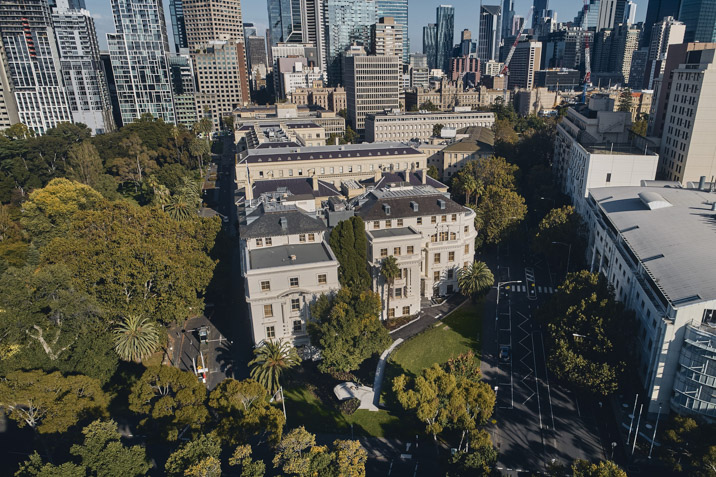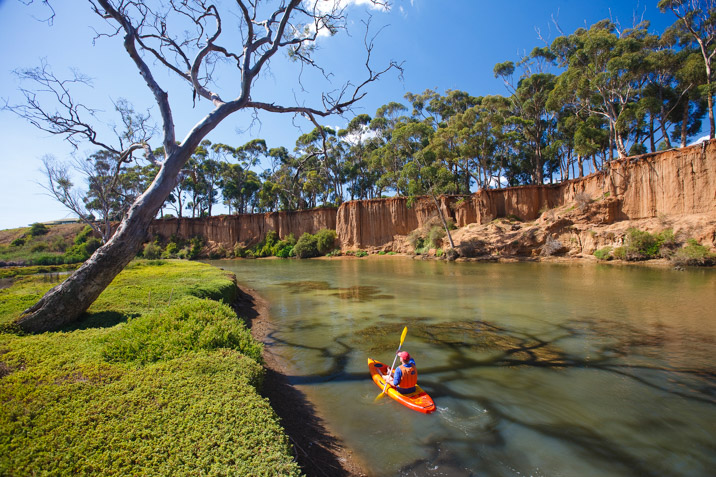The Australian Institute of Landscape Architects’ (AILA) Victorian State Awards has seen 32 entrants crowned across 16 categories, following a record number of submissions.
City Design, TCL and Mike Hewson’s collaboration with City of Melbourne, Transforming Southbank (pictured top), was victorious in the Civic Landscape category. Creating five new public spaces, some 22,000 sqm of public space has been reallocated for the community, with more than 500 new trees and climate-responsive understorey planting at the heart of a burgeoning Melbourne Arts Precinct, Southbank Promenade and Yarra River.
“This outstanding project has far exceeded its primary ambition and the City of Melbourne and its collaborators are commended by the Jury for realising this transformation,” the Jury statement reads.
“Perhaps most delightful of all is the invitation to people of all ages to play, with innovative, place-specific equipment that is beautiful, tactile, and perfectly balances safety, excitement and joy.”

The MUIR+OPENWORK-designed Victorian Family Violence Memorial (pictured above) was awarded the Small Projects’ Award of Excellence for its behaviour-shaping design. As opposed to reworking the site, the design revolves around an existing elm tree, inviting people to congregate on a civic-scaled fold in the lawn and in a room that is set within the fold itself, which is wrapped by textured planting.
“Surrounded by the larger scale urban elements of imposing government edifices and more coarsely grained landscapes, the memorial carves out and defines a welcoming and inclusive, intimate space that invites quiet reflection,” the Jury says.
“Its finely textured plantings are carefully chosen and designed for this effect and for the memorial’s subject. Layered and arranged with great delicacy, their colours variously endure and change with the seasons, but always reference the purple ribbon movement for the elimination of violence against women, and the elimination of family violence.”
The Land Management category’s Award of Excellence was bestowed upon the Lower Werribee Waterway Amenity Action Plan (pictured below). The plan outlines a vision for improved amenity, cultural and environmental values, and enhanced community access and activation of the blue-green corridor.

“Lower Werribee Waterway Amenity Action Plan is an exemplary strategy for the restoration, conservation, and management of the significant river landscape of Wirribi Yalu,” the statement reads.
“The project also demonstrates the innovative use of digital technology to communicate the plan in a transparent and accessible way. This transformational blueprint for the future shared leadership and advocacy to protect and enhance the unique values of Wirribi Yaluk is a fantastic achievement.”
Jury Chair Naomi Barun says that all winners within the program have highlighted the impact of landscape architects within the built and natural environment.
“The voice of the landscape architect was strong in so many projects this year. In addition to a focus on deep listening to the land, communities, and Traditional Owners, landscape architects’ design approach to place appears to have shifted,” she says.
“Not only are we planting with purpose, but this year’s projects demonstrated less of a ‘shaping of the land as an object’ and more engagement and considered insertion into a restored or natural landscape.”
“Projects in this year’s program were applauded for their painterly approach in the use of plants in the balance of the beauty and the applied science of horticulture. This enabled an expression of seasonality, time, and a visible rendering of the ecological systems.”
As with all state winners, the Victorian award winners will now progress to the National Landscape Architecture Awards held later this year.

